Authentic &
Responsible Leadership
It is human nature to categorize people as good or bad, responsible or irresponsible, as it provides a way to compare ourselves to others
and evaluate actions.
©Herb Stevenson, May 25, 2015
What you do speaks so loudly that I cannot hear what you say.
—Ralph Waldo Emerson
There seems to be a massive disconnect between actions and words by many leaders. As I have observed this disconnect in many clients, it reminds me of the above quote and a recent phrase by Charles Manz, Christina Wassenaar, and Pamela Dillon1 that describes it as Authentic Irresponsibility. It reminds me of the impact that occurred when Barbara Kellerman noted the innate bias of leadership when she wrote the book, Bad Leadership. Till that time, very little had been written to reveal that there is as much "bad" leadership as there is "good" leadership. This led to the discussion for indepth assessment of what is bad leadership, instead of the oft used phrase, "I know it when I see it."
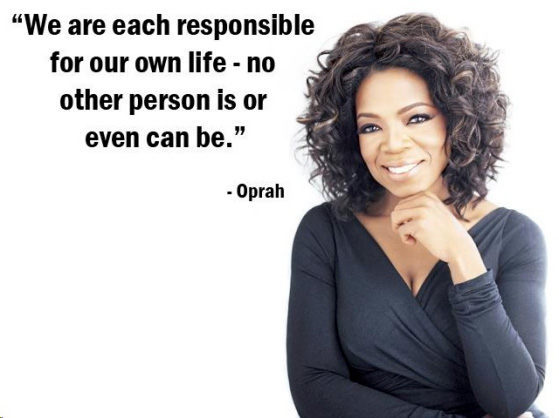 Authentic leadership suggests that the person is "real," genuine, and sincere. Moreover, behaving authentically can be seen as being true to one's own self, or acting in accordance with one's beliefs and values. Combined, it creates a sense that one can most likely be trusted.
Authentic leadership suggests that the person is "real," genuine, and sincere. Moreover, behaving authentically can be seen as being true to one's own self, or acting in accordance with one's beliefs and values. Combined, it creates a sense that one can most likely be trusted.
Authentic Responsibility
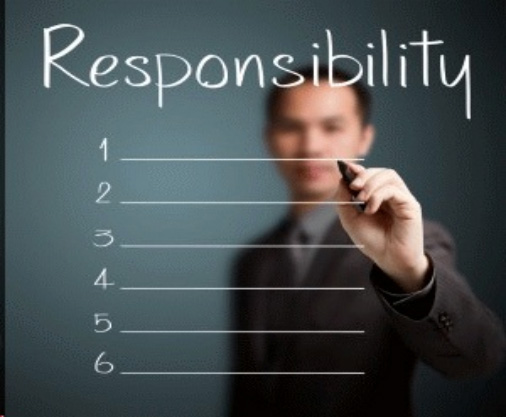 Responsible2 leadership has a sense of obligation to do something which reflects a certain level of care and concern for others while taking into consideration the impact of decisions on others, both inside and outside of the organization. At the executive level, it requires absolute clarity about the depth and breadth of all of the roles implied in the positions. When applied to trust, over time the employee attempts to establish if the leader is responsible by determining if (s)he:
Responsible2 leadership has a sense of obligation to do something which reflects a certain level of care and concern for others while taking into consideration the impact of decisions on others, both inside and outside of the organization. At the executive level, it requires absolute clarity about the depth and breadth of all of the roles implied in the positions. When applied to trust, over time the employee attempts to establish if the leader is responsible by determining if (s)he:
- is caring and being motivated to act in one's interest rather than acting opportunistically for him or herself (Benevolence & Servant Leadership);
- is making good faith agreements, telling the truth, and fulfilling promises (Integrity & Social Contracts);
- has the ability or power to do for the employee what one needs done (Competence, Capability, and Capacity); and
- takes actions (good or bad) that are consistent enough to be forecasted in a given situation (Predictability Across all Roles).3
Leaders who take responsible actions can be trusted because they are influenced by a sense of accountability toward others, revealing an other-regarding orientation as a central value and a general sense of an implicit responsibility that functions like a social contract.
Identity & Role Identity
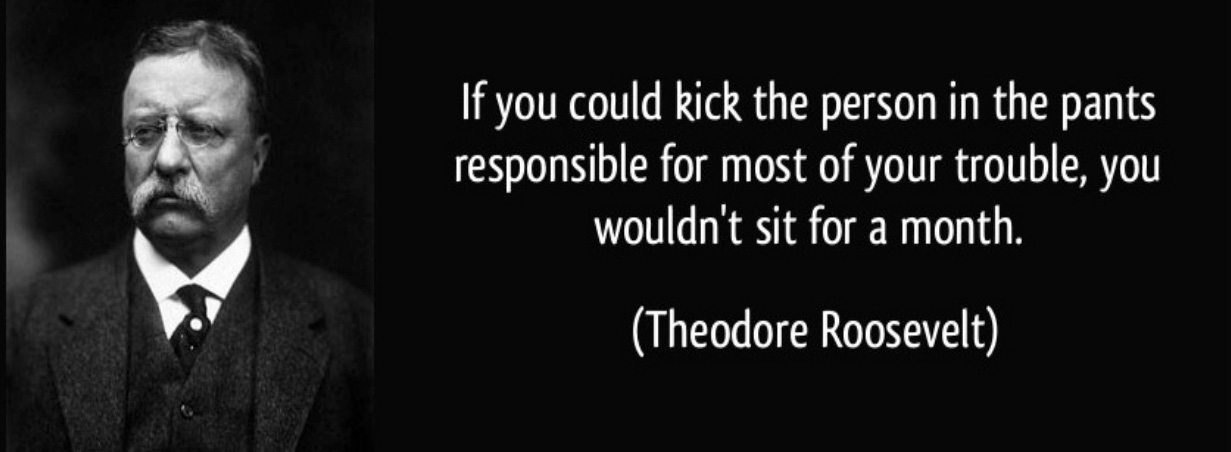
Our identity, or who we believe we are or should be, is a strong indicator of our predisposition for certain types of action. Identity has many different aspects which are influenced by our social roles. These role identities are shaped by our experiences, cultural knowledge associated with the role, as well as interacting with others while in this role. If the person remains over an extended period time with the organization, the eventual role identity taken on by the employee will match the current characteristics of the organizational environment and its cultural norms. The role identities we incorporate into our social identity reflect the expectations, norms and values associated with the context and is often labeled as an organizational identity.
Culture & Organizational Identity4
An organization's culture, often the unwritten rules of how to be successful or to survive, helps to shape the organizational identity by providing consistent messages related to behavioral expectations. In fact, a great deal of individual and group behaviors can be explained by the norms and expectations that are part of an organization's culture.
So often when we talk about leaders and responsibility we neglect to link the unavoidable dependence of individual action and outcome to the interaction between a person's motives, values, expediency, choices and her understanding of customary conduct in the situation. That is, we fail to realize the impact on the individual from the various cultures that have imprinted "what is appropriate behavior."
A Social Contract
 Responsibility reflects an understanding of the interconnected nature of society–— the potential for impacting others positively or negatively by our actions. This contract has a moral component suggesting what is right and what is wrong behavior. Once employees begin to observe the differences between a leader's moral position and daily actions, the potential for authentic irresponsibility develops. This is because each organization, formal or informal, in which an individual creates a personal affinity (sense of belonging), creates an understanding of the proper code of conduct that must be accepted by the individual. There are some codes of conduct that many people have in common based on laws, culture, citizenship, or religion that might be interpreted as responsible or irresponsible depending on the situation and more importantly on the application of the code.
Responsibility reflects an understanding of the interconnected nature of society–— the potential for impacting others positively or negatively by our actions. This contract has a moral component suggesting what is right and what is wrong behavior. Once employees begin to observe the differences between a leader's moral position and daily actions, the potential for authentic irresponsibility develops. This is because each organization, formal or informal, in which an individual creates a personal affinity (sense of belonging), creates an understanding of the proper code of conduct that must be accepted by the individual. There are some codes of conduct that many people have in common based on laws, culture, citizenship, or religion that might be interpreted as responsible or irresponsible depending on the situation and more importantly on the application of the code.
Personal ethics, the internalized code of conduct, therefore, is implicit to individual responsibility. Who we are internally, as an identity, and what we believe matters in whether we are authentic, responsible leaders. Therefore one's moral identity (or how one sees one self as a moral person) contributes to the overall understanding of what it means to be responsible. Moreover, if an individual has not consciously developed an internalized sense of authority, granting permission to fully define who one is and how one will behave within (or not) the various external pressures to conform to generally accepted behavior congruent with the competing culture(s) of family, organization, and society, then the potential exists for authentic irresponsibility to surface.
Authentic Irresponsibility
Irresponsibility occurs when people are not true to the values that are part of their social contract. Their behavior is not consistent with the expectations that are part of this implicit agreement, either at their work or with their own moral code.
Identity
Most people have multiple personal codes that govern different aspects of their lives, making it possible for them to act responsibly in some situations and not in others. The fact is, most of the people who are irresponsible, really don't know what their moral code is, other than it is based on expediency and the path of least resistance and consciousness.
Roles & Role Identity
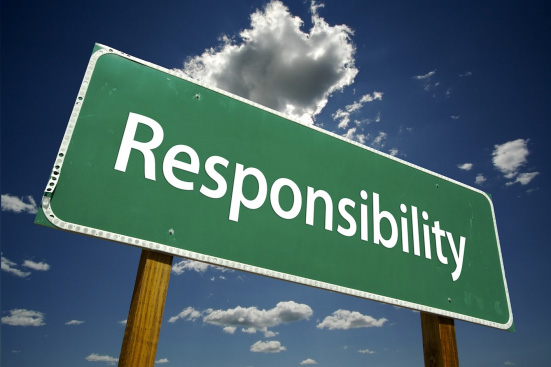 There are also those who, while they articulate a high level of personal morality, are, in fact, only half-heartedly controlled by their moral codes, thus habitually acting irresponsibly through their demonstrated behaviors and actions. Individual behavior will reflect the standards (behavioral norms and values) of the leadership and ergo the organization's culture even though intentions are miles apart from the impact (intent/impact gap) and creating unintended consequences. It is these wide gaps between intent and impact that has led to the many recent police brutality debacles. Under the organizational culture of the police departments in question—Cleveland, Ferguson, New York, and Philadelphia, leadership has conveyed a "blue culture" of be careful (protect thy self), its dangerous in the city (assume the worst, so be safe and not sorry for failing to act) and the job is to protect and serve (by eliminating the criminals).
There are also those who, while they articulate a high level of personal morality, are, in fact, only half-heartedly controlled by their moral codes, thus habitually acting irresponsibly through their demonstrated behaviors and actions. Individual behavior will reflect the standards (behavioral norms and values) of the leadership and ergo the organization's culture even though intentions are miles apart from the impact (intent/impact gap) and creating unintended consequences. It is these wide gaps between intent and impact that has led to the many recent police brutality debacles. Under the organizational culture of the police departments in question—Cleveland, Ferguson, New York, and Philadelphia, leadership has conveyed a "blue culture" of be careful (protect thy self), its dangerous in the city (assume the worst, so be safe and not sorry for failing to act) and the job is to protect and serve (by eliminating the criminals).
Culture
Authentic irresponsibility is possible when being irresponsible becomes a part of the organizational identity. The organizational identity tends to create an unconscious, acceptable way of doing things that seals away the personal identity creating a contradiction in behavior and moreover a completely unintended consequence that reveals the contradiction and now brings the character of the individual into question. Since these cultural codes are usually quite public in their nature within the organization, they tend to become self-perpetuating–—by their very nature they imprint themselves as the general guidelines that define responsibility and irresponsibility without consciously questioning the impact of those guidelines when applied in the greater world.
Continuing with the present moral dilemmas in the above noted cities, the law as presently written and enforced by the courts defaults to protect the authentic irresponsibility of the police department. For example, in a recently decided trial in Cleveland, Ohio, the police officer in question, Michael Brelo was found innocent of all charges. The judged determined that Mr. Brelo acted reasonably under the circumstance and therefore acted within the law. However, it is hard to justify the behavior of Officer Brelo when held to a standard of behavior outside of being a police officer. When the societal standards are applied, there seems to be little reason to believe that the Cleveland Police Department or Officer Brelo acted reasonably within the societal norms of reasonableness.
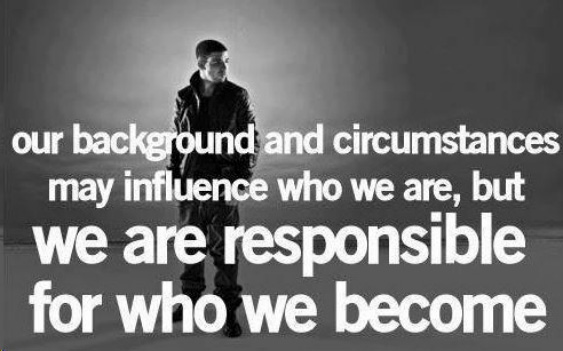 The situation surrounding the trial indicates the depth of the generally acceptable "blue culture" described above and then how it was applied to Officer Brelo's trial. The chase and shooting began when Russell's car backfired as he sped past Cleveland police headquarters. Police officers and bystanders thought someone in the beat-up Chevy Malibu had fired a gun. More than 100 Cleveland police officers in 62 marked and unmarked cars got involved in a pursuit that saw speeds reach 100 mph during the 22-mile-long chase. A chase that ended with 13 officers firing 137 rounds, killing two people. For 25 minutes late in the night of Nov. 29, 2012, the car crisscrossed Cleveland tailed by officers, headed along Interstate 90 and wound up near the back entrance of a school in East Cleveland, where police opened fire. Russell was shot 23 times and Williams was shot 24 times. Police don't know why the driver, Timothy Russell, 43, refused to stop.
The situation surrounding the trial indicates the depth of the generally acceptable "blue culture" described above and then how it was applied to Officer Brelo's trial. The chase and shooting began when Russell's car backfired as he sped past Cleveland police headquarters. Police officers and bystanders thought someone in the beat-up Chevy Malibu had fired a gun. More than 100 Cleveland police officers in 62 marked and unmarked cars got involved in a pursuit that saw speeds reach 100 mph during the 22-mile-long chase. A chase that ended with 13 officers firing 137 rounds, killing two people. For 25 minutes late in the night of Nov. 29, 2012, the car crisscrossed Cleveland tailed by officers, headed along Interstate 90 and wound up near the back entrance of a school in East Cleveland, where police opened fire. Russell was shot 23 times and Williams was shot 24 times. Police don't know why the driver, Timothy Russell, 43, refused to stop.
A review of the deadly police chase in Cleveland last fall found that 75 patrol officers violated orders and police department rules, city officials said Friday. Nineteen officers face disciplinary hearings. The 23-minute pursuit involved five dozen cruisers and wove through residential neighborhood before ending in gunfire. Police Chief Michael McGrath said that the violations ranged from insubordination to failure to obtain permission to leave the city. By way of example, he said, an officer had been driving 100 mph on a side street and was told to stop, but didn't.
Of the 277 officers working that night, at least 104 were involved in the pursuit in some capacity. Not all were there for the duration of the chase. Officers dropped off, others left at the instructions of their supervisor and some just blocked intersections.
Ohio Attorney General Michael DeWine, following an indepth investigation that leadership and communications failures led to the chaotic police chase and "out of control" situation in Cleveland that ended with 13 officers firing 137 rounds and killing two people.
Six officers in Cleveland's police department were indicted. Patrol officer Michael Brelo was charged with two counts of manslaughter, and five supervisors were charged with dereliction of duty for failing to control the chase. Brelo fired a total of 49 shots. After the initial barrage, Brelo jumped on the hood of victims' car, which by then was trapped by police cruisers, and fired 15 more shots.
Meanwhile, the DOJ investigation concluded that there is reasonable cause to believe that CDP engages in a pattern or practice of using unreasonable force in violation of the Fourth Amendment. That pattern manifested in a range of ways, including:
- The unnecessary and excessive use of deadly force, including shootings and head strikes with impact weapons;
- The unnecessary, excessive or retaliatory use of less lethal force including tasers, chemical spray and fists;
- Excessive force against persons who are mentally ill or in crisis, including in cases where the officers were called exclusively for a welfare check; and
- The employment of poor and dangerous tactics that place officers in situations where avoidable force becomes inevitable and places officers and civilians at unnecessary risk.
After determining that a pattern or practice of unconstitutional conduct exists, the investigation assessed the causes for the pattern and developed recommended remedial action. The investigation concluded that Cleveland officers are not provided with adequate training, policy guidance, support, and supervision. Additionally, systems of review that would identify problems and correct institutional weaknesses and provide individual accountability are seriously deficient. The investigation found that division fails to:
- Adequately review and investigate officers' uses of force;
- Fully and objectively investigate all allegations of misconduct;
- Identify and respond to patterns of at-risk behavior;
- Provide its officers with the support, training, supervision, and equipment needed to allow them to do their jobs safely and effectively;
- Adopt and enforce appropriate policies; and
- Implement effective community policing strategies.
Subsequently, Brelo was acquitted in the case that helped prompt the U.S. Department of Justice determine the city police department had a history of using excessive force and violating civil rights. Michael Brelo, 31, faced as many as 22 years in prison had the judge convicted him on two counts of voluntary manslaughter. Before issuing his verdict, Cuyahoga County Common Pleas Judge John P. O'Donnell said he would not "sacrifice" Brelo if the evidence did not merit a conviction.
When applying the "blue culture" of Cleveland Police to this case, we can begin to see how authentic irresponsibility evolved. The entire episode depicts authentic irresponsible behavior. From the initial assumption that it was a gunshot that led to a high speed chase through the streets of Cleveland, to the lack of response by participating officers to "stand- down," to firing well over 100 bullets, and ending with a "John Wayne" dance onto the hood of the car by Officer Brelo and blindly firing 15 more rounds of his 49 total attempts to kill the unarmed suspects, it does not suggest that a reasonableness pervaded any aspect of the death of two innocent people, except that every participating officer acted authentically within the "blue culture's" rule of surviving and how to be a police officer. This is substantiated by the recent response of Cleveland Police Patrolman's Association president Steve Loomis. He complained that aspects of the DOJ agreement that mandates sweeping reforms to the city's police department could put officers in danger. Without thinking about the reasonableness of his comments, he noted that officers could be hesitant to draw their weapons because doing so would result in more paperwork under the terms of the agreement.
His comments highlight that he is caught in the "blue culture's" sense of morality (right and wrong) and has therefore been blinded to his own suggestion to act authentically albeit irresponsibly. Any officer that does not draw their weapon in a dangerous situation because of having to file a report does not deserve to be a police officer. Moreover, I question the capacity to serve, as a police officer, any person who would use report writing as a reason to change the DOJ decree concerning drawing one's weapon.
The redeeming factor of the entire situation is that the DOJ is requiring the "blue culture" to rejoin the larger societal needs of the city. No doubt, this will result in many officers leaving the police force as the department is now being policed by the DOJ.
References
C.L. Wassenaar, et al., Authentic Irresponsibility, Organ Dyn (2015), IN PRESS http://dx.doi.org/10.1016/j.orgdyn.2015.02.007
Roderick Kramer & Karen Cook, Trust and Distrust in Organizations: Dilemmas & Approaches, D. Harrison McKnight and Norman L. Chervany, Trust and Distrust Definitions: One Bite at a Time in R. Falcone, M. Singh, and Y.-H. Tan (Eds.): Trust in Cyber-societies, LNAI 2246, pp. 27–54, 2001. c Springer-Verlag Berlin Heidelberg 2001.
Multiple news agencies
Footnotes
1 Craig Pearce and Christopher Peck have joined these authors in other publications that describe authentic irresponsibility.
2 Responsible: 1.) having an obligation to do something, or having control over or care for someone; 2.) being the primary cause of something and so able to be blamed or credited for it. ->(responsible to) reporting to; answerable to. ->morally accountable for one's behavior; 3.) (of a job or position) involving important duties or decisions or control over others; 4.) capable of being trusted.
3 The reader is encouraged to return to the prior two newsletter articles to develop a more indepth understanding of leadership and organization trust.
- http://www.clevelandconsultinggroup.com/articles/behavioral-elements-of-trust-distrust.php
- http://www.clevelandconsultinggroup.com/articles/trust.php
4 The reader is encouraged to read prior articles on culture:
I Appreciate Your Feedback
Please let me know if you found this article interesting or useful.
I will not submit this information to any third parties.